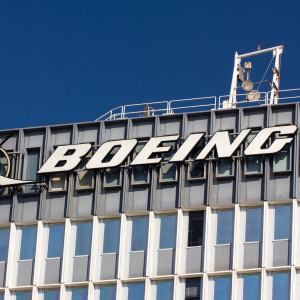Americans may recall the crash of a Boeing 737 MAX 8 in Ethiopia in 2019 that killed 157 people. My sister Graziella died in that crash.
We now know that was partly caused by Boeing hiding from pilots and the Federal Aviation Administration an automatically activated flight control system called “MCAS.” A Texas federal judge recently found that Boeing’s criminal conspiracy to hide MCAS caused the Ethiopian crash and a similar MAX 8 crash in Indonesia a few months before.
Now, as Boeing looks to launch its new 737 MAX 7 and 10 models, I’m concerned that Boeing is using its lobbying clout to persuade some politicians, airline CEOs and pilot groups to ignore aviation engineering safety rules and once again put an unsafe plane in the air.
The Boeing crashes were partly caused by an antiquated crew alert system that does not comply with FAA rules. The outdated system produces confusing and false alerts that can distract and startle pilots in emergencies. Boeing had lobbied the Federal Aviation Administration hard to avoid upgrading the crew alert system in previous 737 models. They couldn’t claim the old system was as safe as a newer version. Instead, they successfully argued that upgrading would have cost too much money.
Now, Boeing wants its as-yet-uncertified MAX 7 and 10 planes to be exempt from FAA requirements for a modern, safe crew alert system. Since the company has not produced engineering data to demonstrate the safety of the older system, Boeing officials and lobbyists are claiming it’s better to keep using the old cockpit system simply because pilots are familiar with it. But again, they have not presented any actual data to back this up.
The 737 MAX is unique. It is the only large passenger aircraft produced today that does not meet the intent of FAA regulations established in 2011 after a series of airplane crashes that resulted in 823 deaths. Since then, all Boeing aircraft — except the 737 MAX — have complied with these requirements. All Airbus aircraft also comply with these rules.
Instead of investing in a new crew alert system for the MAX 7 and 10, however, Boeing is asking Congress for an exemption from the FAA’s regulations. This defies logic. The FAA’s methodical rule-making process for crew alert systems took nine years. And it achieved something important — reducing so-called nuisance alerts that can distract pilots during emergencies.
Let’s be clear about what it would mean if Boeing continues to use an outdated cockpit system. The 737 MAX planes are using a system designed to meet standards from 1977 — an era before microprocessors and flat-screen displays. The only way to justify the continued operation of a 45-year-old flight system is to claim that pilots prefer a familiar, “common” cockpit. But the only “data” to justify this choice is financial. Sticking with an outdated system can reduce pilot training costs for the airlines — and cut design and certification costs for Boeing. But aerospace engineers such as myself are fearful of what we see as cost-cutting that could lead to another potentially fatal aviation disaster.
We’ve already seen Boeing try this approach. The company’s desire to keep the 737 MAX “the same” as previous models led directly to the incorporation of the deadly MCAS system. In fact, when Boeing raced to complete the 737 MAX, it never informed pilots or the airlines about the existence of the faulty MCAS. Boeing simply plowed ahead. Now, we’re being asked to trust them again.
It’s said that FAA regulations are written in blood: Someone died, the FAA figured out why, and they wrote a regulation to keep more people from dying. That’s never been more true than in this case. To ignore the painstaking work that has been done to develop these rules is an insult to the memory of the victims. Boeing must not be allowed to continue manufacturing the 737 MAX with an unsafe, obsolete crew alert system.


